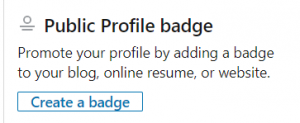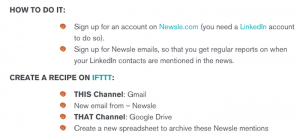
With social media marketing, analytics tells you only part of the story. Without benchmarking, you’re in the dark about competition and how you’re faring against it.
Competitive analysis will help you understand your hold over your market on social media and find ways to expand it. It will also give you proven ideas, strategies and tactics that you are ignoring, and the right methods to implement them.
Here’s a five step process on conducting social media competitive analysis.
1. List Competition & Social Platforms
Which businesses do you want to compare yourself to?
Two businesses can have the same product, but be targeting entirely different demographics. For instance, take smart phones. iOS and Android users are very different, in many ways.
Some newer players in the mobile tech field like Oppo and Xiaomi are focussed on very specific target groups – people who’d pay to be able to take great selfies.
Similarly, on social networks, your competition isn’t only the businesses targeting the same demographic, but anybody creating content in the same space as you.
Before you proceed with competitive analysis, create a list of 3-5 top businesses you want to benchmark yours against.
Run Google queries with keywords in your niche and look at the businesses that show up. Find and make a note of all of their social media pages.
Based on which networks you want to focus on, list the social properties you want to follow.
2. Benchmark Engagement & Page Performance
When benchmarking engagement and page performance, you need to find tools that allow you to measure social media properties that you don’t own as well. After all, there’s no point in only determining your engagement numbers with no sense of your competition’s.
There are five tools that can help you do this:
- Unmetric – measures your engagement and benchmarks this against an industry standard and your competition.
- Buzzsumo – helps you find viral content for any keyword, so you can keep tabs on your content competition.
- Growthbot – accesses top posts and share numbers for any domain.
- FanPage Karma – compares two Facebook pages.
Make a note of the pages that beat you in engagement, so you can analyze their content in depth later in the process. It’s also important to keep track of the new topics being discussed in your niche because they may be indication of a trend, pre-rising.
3. Analyze Referral Traffic
If you can determine which social media platforms drive how much traffic to your competitors’ websites, you can decide which ones to focus on strategically.
There are two great tools to monitor referral traffic:
1. SimilarWeb: Compares web properties you mention and creates a ‘To watch’ list for you.
2. Alexa: Also comes as a Chrome plugin that you can click on when on any property for useful information like web ranking, backlinks and top referring sites.
Websites that are receiving most traffic from social networks are doing something that you should obviously pay attention to. Add those websites to your ‘To watch’ list as well, for reference later in the process.
4. Compare Content On-page And In Posts
Once you have your list of competitors to watch, it’s time to analyze their content and narrow down on elements, content types and times working for them.
Create Sheets to check and note down what your competition is following in terms of important insights like keywords mentioned in posts, post length, images and colors used, content formats used and time of posting that receives most engagement.
Any page that shows steady follower growth, increasing engagement and good numbers of PTAT (People Talking About This) or mentions are worth watching for ideas.
Noticed a few posts that did particularly well that you want to leverage for your brand? Try applying the skyscraper technique.
Take the concept and present it with more in-depth, updated research or better presentation.
5. Gauge Audience Interaction And Feedback
Audience feedback is all important. There’s no better indication of a thriving social media community than a page that’s alive with replies, comments or discussions.
If you are monitoring brands with this type of community built, you can not only find insights that can help you create such a community, but can also learn more about your target audience in the process.
It’s useful to keep an eye on both brands receiving positive and negative attention, because managing negative feedback is also crucial in building a powerful social media presence.
Take notice of what questions your competitors are asking, how your audience is responding to them and what the response time is. Each of these factors matter in creating your strategy.
Insights gleaned from competitive analysis can transform your social media marketing. By plugging them in your content strategy, you can grow your social following and business.
* Adapted lead image: ![]() Public Domain, pixabay.com via getstencil.com
Public Domain, pixabay.com via getstencil.com
The post How to Stalk Competition & Create an Unbeatable Strategy #Social appeared first on Search Engine People Blog.
Search Engine People Blog(87)









